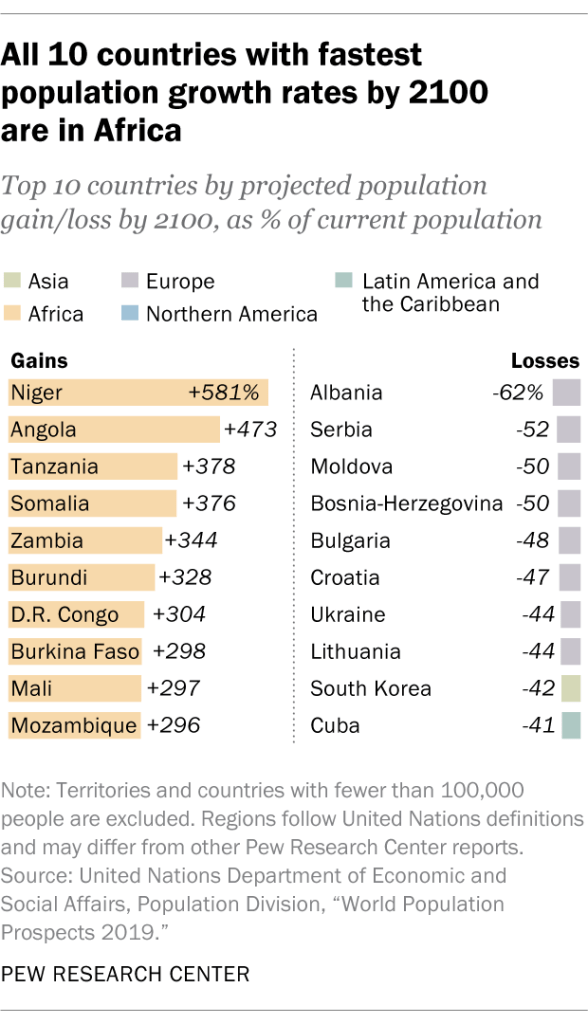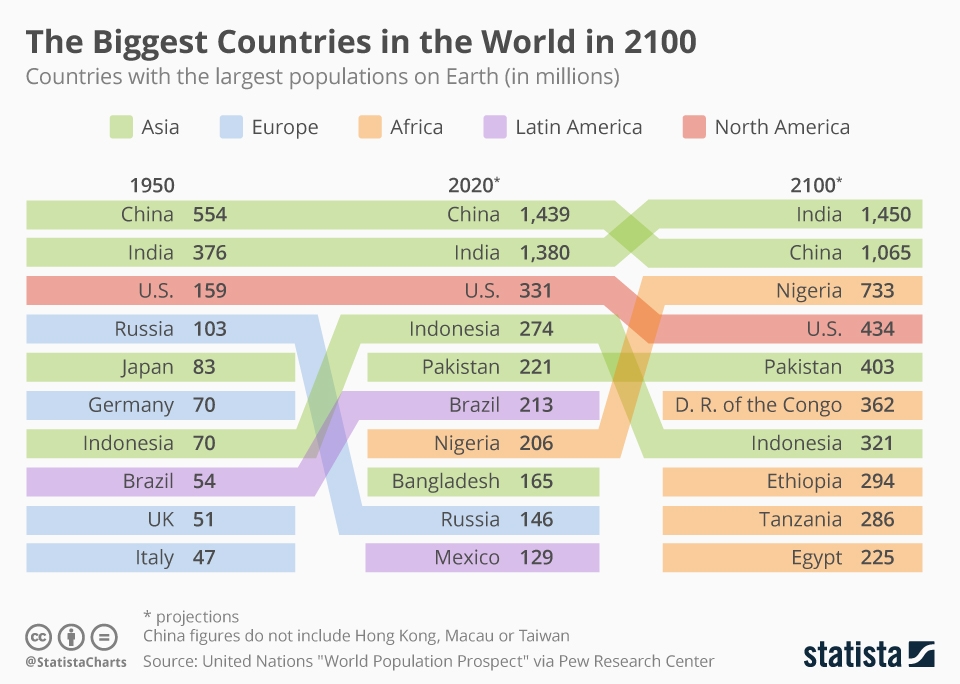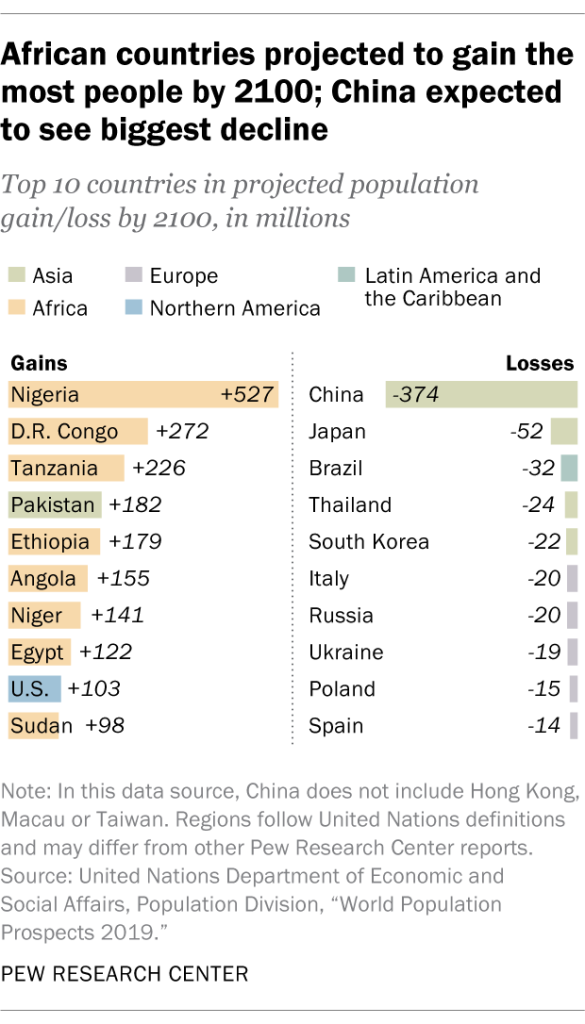Some of the ten most populous countries in the world right now will no longer be on the list by the year 2100. They will be overtaken by other quickly growing countries. This is revealed by the population projections from the United Nations (UN)
The following graphic summarizes the movement of the country sizes by population in the years 1950, 2020, 2100.
This year, China is the most populous country, with an estimated population size of 1.44 billion. It is followed by India, the US, Indonesia, Pakistan, Brazil, Nigeria, Bangladesh, Russia, and Mexico.
In the next century, these rankings will experience some drastic changes.
New century, new rankings
In the year 2100 China, which has been the most populous country since the 1950s, will be overtaken by the second placer India.
China is experiencing a gradual shrink in their population. This is linked to the improving standard of living and education in the country.
While in the future we will continue to witness growth from the Asian countries, UN projects their growth rate to be slowing down over time.
According to Pew Research Centre, four countries in the 2020 rankings — Mexico, Brazil, Bangladesh, and Russia — will be either experiencing a slower growth rate or are expected to undergo population losses over the next decades.
Meanwhile, the opposite is true in the case of Africa where the population growth is accelerating.
Because of the projected accelerated growth of the African countries, five of them — Nigeria, Congo, Ethiopia, Tanzania and Egypt — will be dominating the 2100 list.
Four Asian countries — India, China, Pakistan, and Indonesia — will remain in the top ten list, though their positions in the rankings will be altered. Meanwhile, the US is the sole country from the Americas that will be in the list.
Europe, on the other hand, has steadily gone down in representation in the top ten list, with four countries within the list back in the 1950s, down to just one this year, and decreasing further to none by 2100.
Overwhelming growth
The five African countries cited earlier will account for around half the world population growth in 2100 according to the computations of the Pew Research Centre.
This means that in the year 2100, half of the world’s babies will be born in Africa.
This growth of Africa goes beyond just the top ten. Among the ten countries expected to have the largest gains by the year 2020, eight are African countries. This is shown in the graphic below.
The only non-African countries expected to have the largest population gains in the year 2100 are the US and Pakistan.
In terms of growth rates, the ten fastest-growing are all African countries:

With all these figures laid down before us, it is clear that Africa’s rapid growth will be the key driver of the global population growth by 2020. With this knowledge, leaders should prepare concrete and long-term measures to ensure that this growth will be properly managed as early as now.











